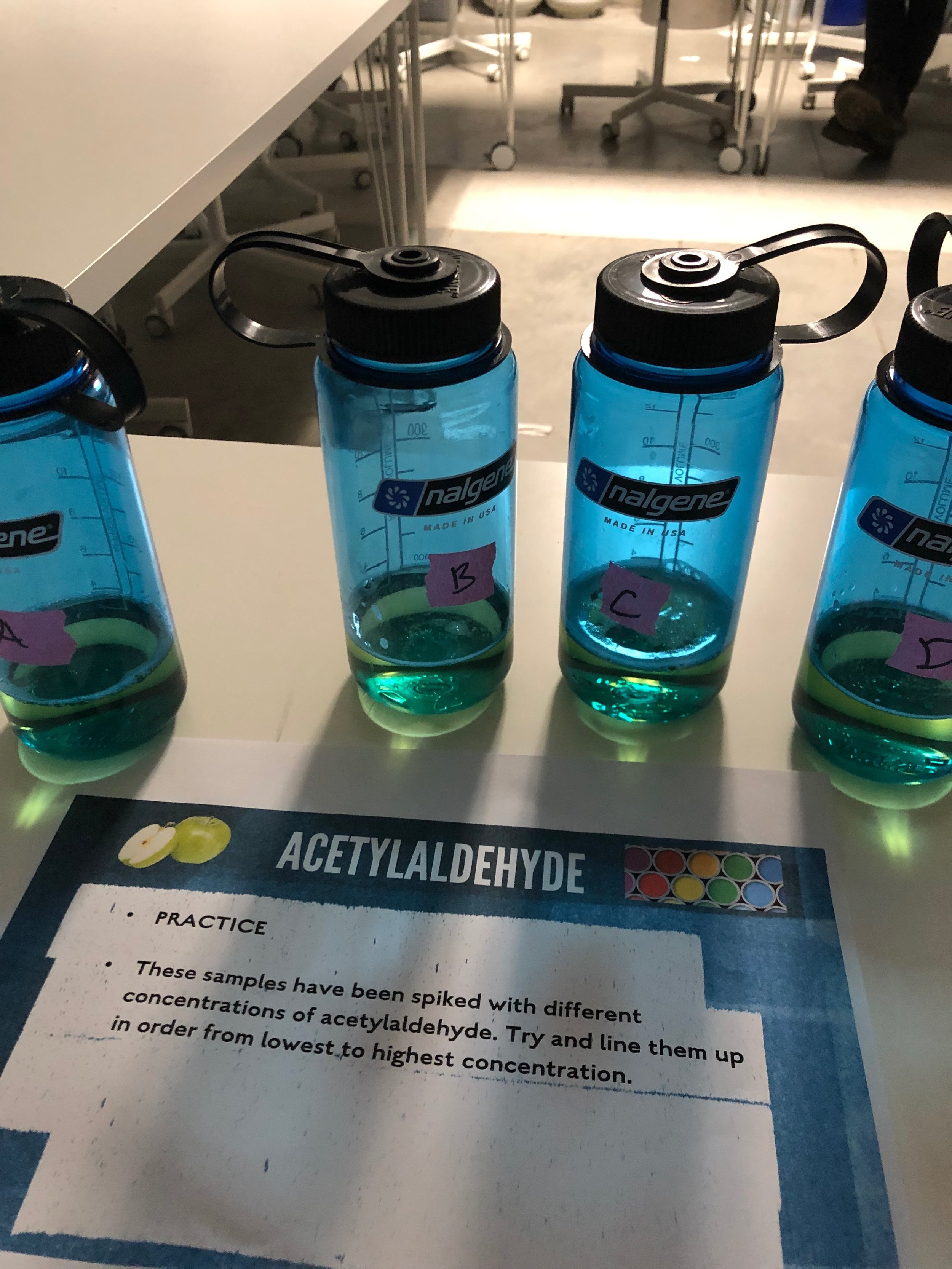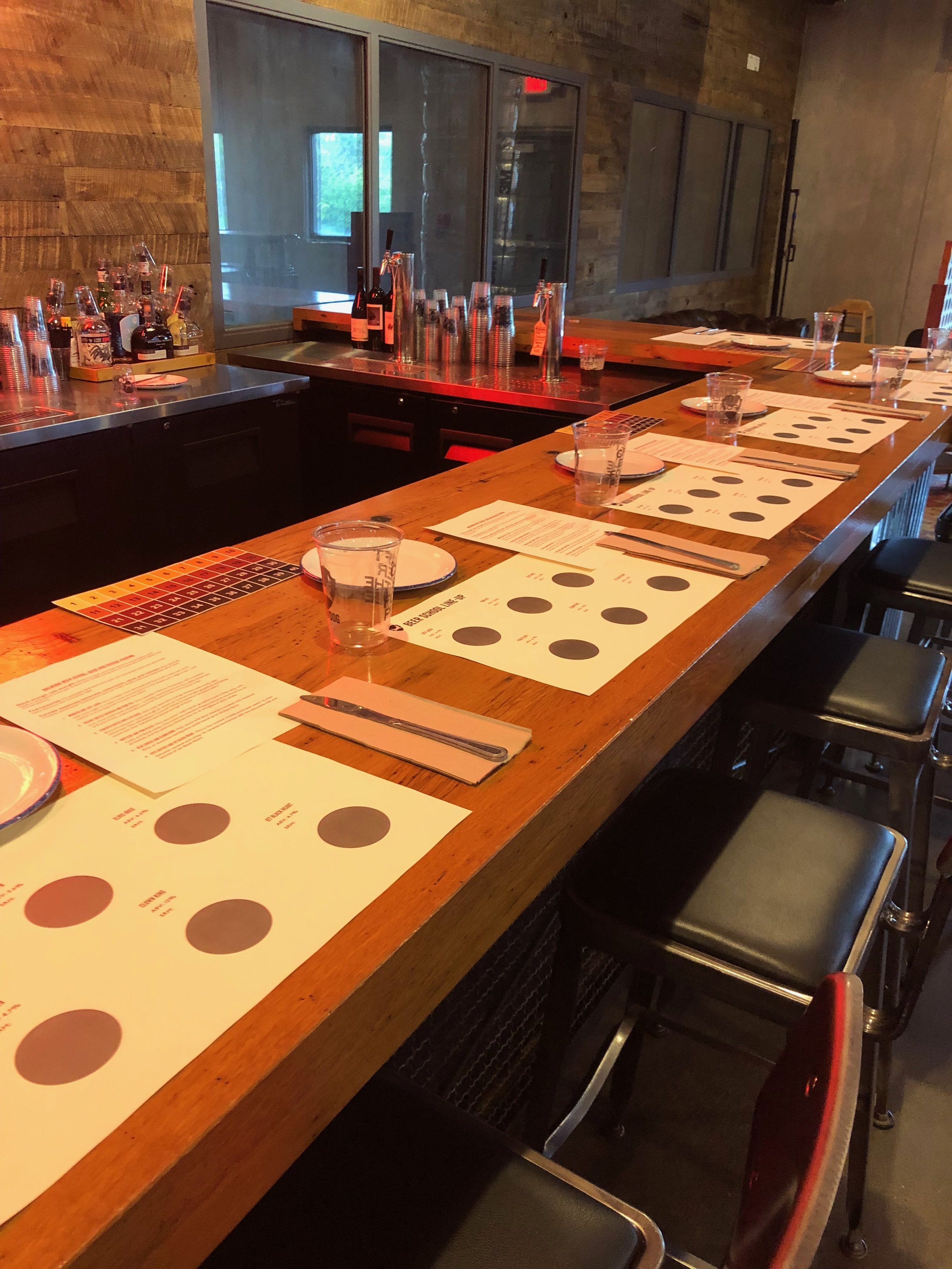How the Certified Cicerone Exam Is Graded
The Cicerone program offers a perfect explanation of how they grade the exam, but it can be a little tricky to find it on their website. (The home page for info on the Certified Cicerone exam says that a reader can find the scoring breakdown “further down this page,” but I don’t see it there?) The scoring breakdown page is easily accessible from the page where you receive your results, though, and will direct you to this very helpful grid:
Follow the link above for a bigger/clearer picture of this grid.
In total, each section contributes the following percentages to your overall score:
Keeping and Serving Beer: 25%
Beer Styles: 25%
Beer Flavor and Evaluation: 25%
Beer Ingredients and Brewing Process: 15%
Pairing Beer with Food: 10%
Overall, your essays count for 12.5% of your overall score (with the one on Beer Ingredients and Brewing Process weighted just slightly less heavily than the other two), the video demonstration for 4%, and the tasting portion for 16.75%.
For some reason, I went into the exam thinking that you needed to score higher than 80% on the written portion and 70% on the tasting portion. If you didn’t pass one part, you could always retake that part.
That was reassuring coming out of the exam, when I knew for sure that I had bombed the tasting portion but felt pretty good about the written portion.
A couple weeks before I received my results, though, we reviewed how the exam is graded in one of our weekly Cicerone classes at BrewDog. In that moment, I realized that you have to exceed 80% overall to which the tasting portion contributes 16.75%, as well as exceeding 70% on the tasting portion alone.
This changed the game for my results. I knew that I had done so poorly on the tasting part that, with a little math, I needed to receive above 92% on the rest of the test to squeak out an 80% on the overall. Scoring above 90% in 4/5 of categories is no small order on this challenging exam.
So I was relieved - and a little surprised - to receive my results. Which look like this:
Please feel free to laugh at the huge discrepancy here. I did, and do.
In my write-up of my experience taking the exam, I wrote that I bombed the tasting part. I was not being dramatic. Get a load of that 36% on the tasting portion! If there were a color that were more red than red, that score certainly deserves it.
But look at the numbers on the right. The tasting portion makes up 2/3 of the “Beer Flavor & Evaluation” section, so that 36% on the tasting portion brought “Beer Flavor & Evaluation” down to 57%. Woah. (At the same time, I’m a little proud that I had to have scored darn near close to perfect on the short-answer questions on “Beer Flavor & Evaluation” to even get that portion up to a whopping 57%, since the questions count for just 1/3 of the overall “Beer Flavor & Evaluation” portion.) Despite the 57%, the other sections pulled my score up juuuuust enough for me to pass the exam, overall.
I put a lot of effort into studying for the exam, so I was very relieved to not have to start memorizing ABV ranges and commercial examples of styles again. But I still wasn’t so sure that I could pass the tasting portion, so I wondered if it all that studying was for naught. “Aren’t you just born knowing how to taste?”, I wondered.
Two morals of this story, for now:
I’d recommend not sitting for the exam until your tasting is up to snuff. That portion greatly affects your overall score. Why spend the time and money studying for the overall part if the tasting portion ends up pulling your overall below 80%?
That said, play to your strengths. If your tasting is weak, then be sure to knock those other parts out of the park.
Third moral of the story will follow in my write-up of retaking the tasting portion, which I did on May 22 at Rhinegeist in Cincinnati. Sneak peek: as much as I thought the inverse right after I first sat for the Cicerone exam, tasting is a totally learn-able skill.









